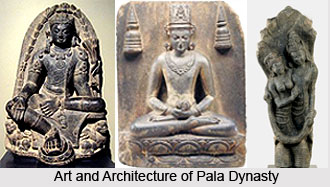 Early History of Assam narrates the confluence of different cultures which originated due to the assemblage of people belonging to different regions including the Austroasiatic, Tibeto-Burman, Indo-Aryan and many more. In ancient times, Assam has been politically invaded but it has never been the centre of any external power till 1821 up to the advent of Burmese followed by the advent of British in the year 1826. The history of Assam in ancient times has been deciphered from rock inscriptions, copper plates and royal grants that the kings of Kamarupa kingdom used to issue during their rule. Folklores and epics including Mahabharata, Yogini Tantra and Kalika Purana have also played a key role in reconstructing the early history of Assam.
Early History of Assam narrates the confluence of different cultures which originated due to the assemblage of people belonging to different regions including the Austroasiatic, Tibeto-Burman, Indo-Aryan and many more. In ancient times, Assam has been politically invaded but it has never been the centre of any external power till 1821 up to the advent of Burmese followed by the advent of British in the year 1826. The history of Assam in ancient times has been deciphered from rock inscriptions, copper plates and royal grants that the kings of Kamarupa kingdom used to issue during their rule. Folklores and epics including Mahabharata, Yogini Tantra and Kalika Purana have also played a key role in reconstructing the early history of Assam.
Paleolithic Age in Assam
People belonging to the Middle Pleistocene period, 781,000 to 126,000 years ago, were considered to be the first inhabitants of Assam. They used to dwell in the Rongram valley of Garo Hills. Handaxe-cleaver tools have been found in the Paleolithic sites and the artefacts are found to be associated with Abbevillio-Acheulean culture. Evidences of microlithic culture have also been found in the Rongram Valley of Garo Hills between the neolithic layers of the soil. The microliths of Assam were made of dolerite, which were different from the microliths of rest of the country. Remains hand-made pottery shows that the people belonging to microlithic culture were food-gatherers and hunters.
Neolithic Age in Assam
Neolithic age in Assam has been evident from flaked hand-axe found in the Garo hills. Affinity of these artefacts has been found with the Hoabinhian culture and the place also shows association of Indian and the Southeast Asian cultures. Late Neolithic age of Assam is dated to 4500 to 4000 BC and many Assam sites including the hills and high grounds have furnished articles related to this era. Shifting cultivation, also known as jhum, was prevalent in that period which is still practiced many several communities. Sites of Neolithic age in Assam are Sarutaru in Kamrup district, Daojali Hading in Dima Hasao and Selbagiri in the Garo Hills.
Megalithic Age in Assam
Evidences of Megalithic age have also been found in Assam which belongs to the period of first millennium BC. Culture of this era still prevails among the people of Khasi and Naga tribes. This culture is also considered as the precursor of the fertility cult, the saktism and the vajrayana Buddhism which followed course.
Mythological History of Assam
The appearance of Assam in prehistoric age has been structured from various epics of India. A non-Aryan Danava dynasty was probably the first political entity of the region and the first king of the dynasty was known as Mahiranga. Narakasura was the eliminator of this dynasty. Naraka was the generic name assigned to the kings of the Naraka dynasty. Legends say that Lord Krishna killed the last king of Naraka dynasty and the throne was succeeded by his son Bhagadatta. Bhagadatta also took part in the Mahabharata war along with the army of kiratas, chinas and dwellers of the eastern sea. This fact also indicates that a part of Bangladesh was also included in his kingdom. Suparua was the last ruler of Naraka dynasty.
Ancient History of Assam
Ancient Assam was marked by the establishment of Varman dynasty of Pushya Varman, in the Kamarupa kingdom in 4th century. The dynasty probably had aboriginal origin but the lineage was drawn from Narakasura. In 7th century under Bhaskar Varman, the kingdom flourished greatly. Bhaskar Varman had no son and thus after his death the authority went to Salasthamba who later established Mlechchha dynasty. In late 9th century this kingdom also declined and Brahmapala was declared as the new monarch who established Pala dynasty. In 1110 the Gaur king, Ramapala eliminated the last king of Pala dynasty. Timgyadeva and Vaidyadeva who were the two subsequent kings ruled independently as Gaur kings. They also issued grants under the old Kamarupa seals. 12th century was marked by the decline of later rulers and the rise of individual kings which led to the end of the Kamarupa kingdom of Ancient Assam.



















